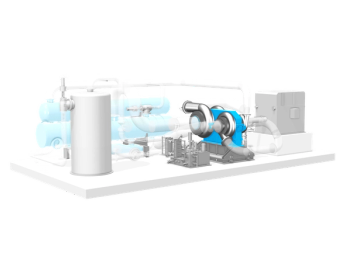
Renewables take up 65% of all new US power projects to be built in the next five years
The U.S. power business underwent dramatic changes in 2011 that will shape tens of billions of dollars of fuel, construction and maintenance work for years to come. In the U.S., Industrial Info Resources (IIR) is tracking 267 new-build generation projects with combined generating capacity of about 24.3 gigawatts (GW) that are scheduled to kick off in 2011. These projects represent $51 billion in total investment value (TIV).
The U.S. power business is extremely dynamic, particularly today. Regardless of the fuel, not all new-build power projects will start according to schedule: Some will be accelerated while others will be delayed. Next month, some projects will be cancelled while new ones will be announced. Predictions made one week have to be updated the next—just like weather forecasting.
A strategic trend that has continued in 2011, and we predict will extend into 2012 and beyond, is the greening of the U.S. electricity business. Although coal, gas and nuclear are still ranked 1-2-3 in terms of market share of the electricity market, renewable generation continued its rapid growth in 2011. Over 15,000 megawatts (MW) of renewable generation valued at nearly $44 billion is scheduled to break ground in the U.S. this year. A relatively small but rapidly growing segment of the electric generation business, renewables like wind, solar, geothermal and biomass generation continue to change the face of the U.S. power business. Renewable generation accounts for about 65% of all generation projects scheduled to kick off in the 2012-2016 period, according to data tracked by IIR. Over the next five years, areas with particularly aggressive plans for renewable electric generation include the Rocky Mountains, West Coast, Midwest, Southwest and Great Lakes regions.
Renewable energy continues to enjoy wide support on Capitol Hill, particularly for the construction jobs it creates. But Congress has not yet enacted a federal renewable portfolio standard (RPS) because other, more pressing, issues have dominated the Congressional energy agenda in 2011. Coal: Environmental regs drive strategic choices. The coal-fired power business got some clarity on environmental regulations this year when EPA finalized its Cross-State Air Pollution Rule in mid-2011, which covers power plants in 28 states east of the Mississippi River. This rule, previously called the Clean Air Transport Rule, replaces the Clean Air Interstate Rule (CAIR), which a federal court sent back to the agency in 2008.
By 2014, the Cross-State rule will lower sulfur dioxide (SO2) and nitrogen oxide (NOx) emissions by 73% and 54%, respectively, from 2005 levels. Phase I goes into effect in January 2012. Phase II, due to go into effect in mid-2014, focuses more on NOx emissions than SO2 emissions. In March 2011, EPA released its draft Maximum Achievable Control Technology (MACT) rule for reducing power plant emissions of mercury and hazardous air pollutants (HAPs) for power stations larger than 25 MW. This rule, expected to be finalized later this year, will reduce power-plant emissions of mercury by 78% and particulate emissions by 31% as a co-benefit. Owners of coal- or oil-fired generation would have four years to comply with the new standards.
The EPA estimated that about 1,350 generating units in the U.S. would be affected. This ruling replaces the Clean Air Mercury Rule (CAMR), which a federal court remanded to the EPA in 2008.
Weeks prior to the release of the draft MACT rule, EPA asked a federal court for a 12-24 month extension to complete work on the rule. The agency wanted more time to address the over 4,000 comments that were still pending at the time. The federal court denied the EPA’s request and gave it a 21-day extension, until late March. Since the denial and the release of the draft regulation, EPA has been preparing itself for additional litigation on the MACT rule.
(More in Turbomachinery Handbook 2012)
Newsletter
Power your knowledge with the latest in turbine technology, engineering advances, and energy solutions—subscribe to Turbomachinery International today.





